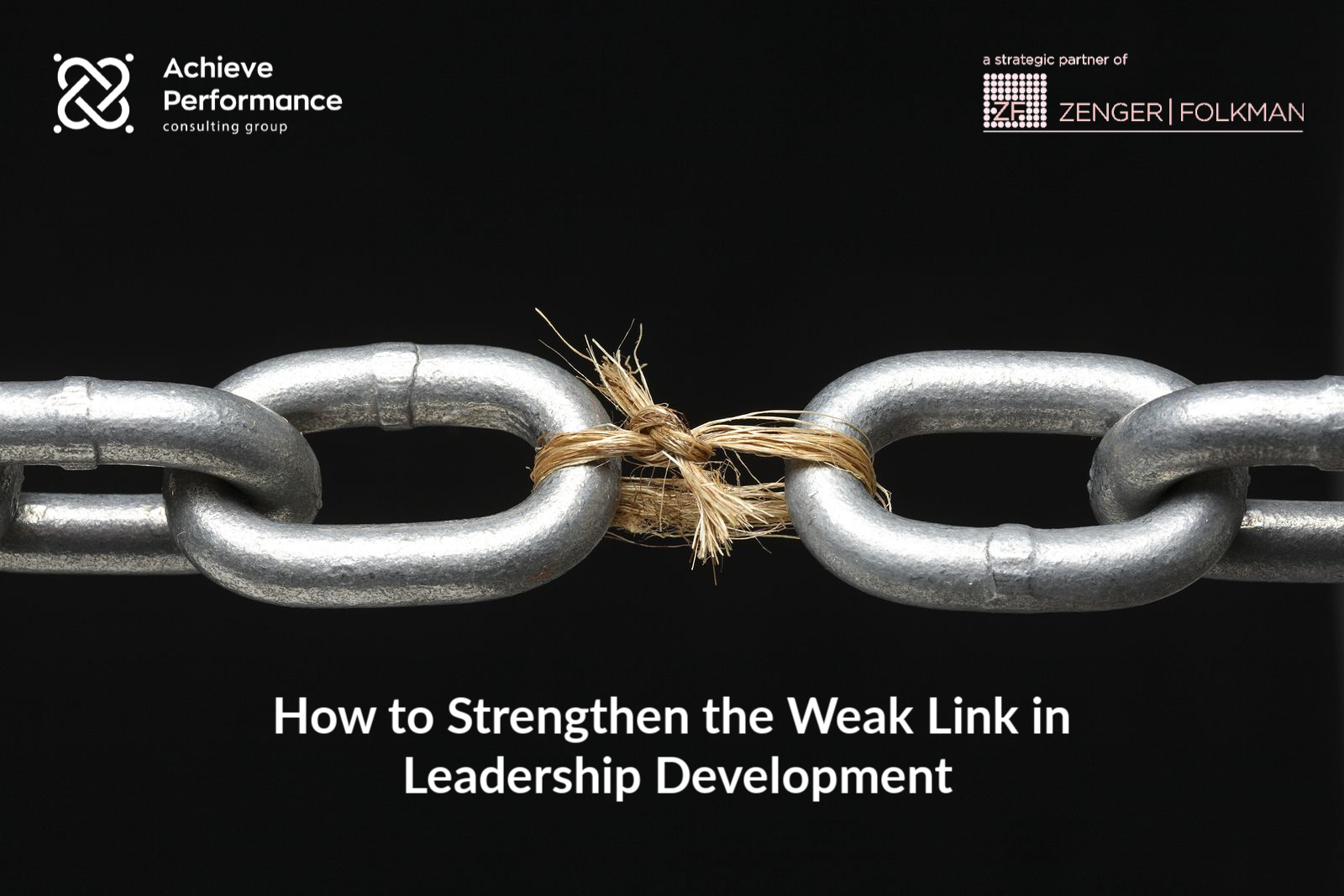How to Strengthen the Weak Link in Leadership Development

Persuasive Presentation Techniques

Does Culture HAVE to Eat Strategy for Lunch?


How to Strengthen the Weak Link in Leadership Development
”
These conclusions are from a report published in the November-December issue of Harvard Business Review. The authors trace the main source of these dismal results to using unproven and ineffective leadership development approaches. The missing link is a scientific or evidence-based approach: “a scientific approach to talent development — focused on spotting high potentials, understanding their capacity for growth in key competencies, and giving them the experience and support they need to succeed — will be an extraordinary source of competitive advantage in the coming decades. And it will help many more managers transform themselves into the great leaders they were always meant to be.”
A key reason The CLEMMER Group has been a strategic partner with Zenger Folkman for the past five years is their deep research and evidence-based approaches to leadership and coaching skill development.
Here are five key evidence-based findings from ZF’s research paper, Leadership Under the Microscope:
1. We need to set our sights higher – helping good managers become extraordinary leaders produces outstanding results.
2. We need to stop emphasizing weaknesses – “lack of weaknesses” doesn’t distinguish outstanding leaders. A few towering strengths define the best leaders
3. We need to invest more in identifying and developing strengths – three or four strengths leveraged to a top level of effectiveness puts him or her in the top 10% of leaders.
4. Leadership needs a broad footprint – the very best leaders balance character, focusing on results, personal capability, leading change, and interpersonal skills.
5. Developing a strength often requires a non-linear approach – each leadership skill can be mapped with supporting behaviors that can form powerful development combinations.
There’s been a significant growth in strength building tools and approaches over the past decade. It’s an approach that makes lots of sense to many people. However, “strengths” can have many meanings and applications. Many times they refer to traits, interests, values, or even resources. Assessing and strengthening those elements in ourselves and our situation can be quite helpful.
When it comes to leadership development, skills or behaviors as perceived by the people the leader is trying to influence or lead, is the most useful approach to strength building. That’s where a strengths-based 360 feedback assessment can be invaluable. Through pre-post studies, Zenger Folkman has found that leveraging the strengths in observable skills or behaviors that others see in the leader is 2 to 3 times more effective than traditional approaches.
As the authors of the Harvard Business Review report found, “when companies take this approach to leadership development — focusing on potential and figuring out how to help people build the competencies they need for various roles — they see results.” Read more
Author: Jim Clemmer
Source: Clemmer Group



